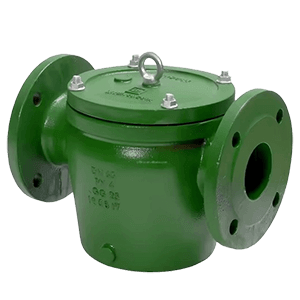In the maritime industry, a mudbox is a type of coarse strainer installed in a ship’s seawater or fluid intake systems. Its primary role is to filter out solid debris, marine growth, sand, silt, shells, and rust particles before these contaminants can enter pumps, heat exchangers, or other critical machinery. This simple yet essential device acts as the first line of defense in the vessel’s seawater filtration process, ensuring smooth and safe operation.
Location and Installation
Mudboxes are usually installed at the lowest point in the pipeline, often directly connected to the sea chest or at the suction side of seawater pumps. This strategic position ensures that all incoming seawater passes through the mudbox before reaching sensitive equipment. They are typically found in:
-
①Engine room seawater cooling systems
-
②Ballast water systems
-
③Firefighting seawater supply lines
-
④Bilge and ballast pump suctions
How a Mudbox Works
The mudbox contains a removable perforated plate or mesh screen housed inside a corrosion-resistant body made of materials like bronze, cast steel, or stainless steel. As seawater flows through the mudbox, large solid particles are trapped on the screen, while clean water continues to the pump or downstream system.
To maintain efficiency, the mudbox is designed with a bolted or hinged cover for quick access during cleaning. Crews typically open and clean the mudbox regularly, especially in areas with high marine growth or muddy waters.
Why Mudboxes Are Essential for Ships
Without a mudbox, unfiltered seawater can cause:
-
①Pump damage from abrasive particles
-
②Blockages in pipelines due to debris accumulation
-
③Reduced heat exchanger efficiency from fouling
-
④Engine overheating caused by restricted cooling water flow
-
⑤Increased maintenance costs from unplanned repairs
By trapping harmful debris early, a mudbox reduces wear and tear, prevents breakdowns, and ensures reliable ship operation.
Maintenance Practices
To keep the system effective, ship engineers follow a routine mudbox cleaning schedule, which may be:
-
①Daily or weekly in high-sediment waters
-
②Before and after port calls in shallow or muddy areas
-
③During every engine room watch in challenging sea conditions
During cleaning, the screen is removed, washed, and inspected for damage. If the mesh is worn or corroded, it’s replaced to maintain filtration efficiency.
Post time: Aug-15-2025

